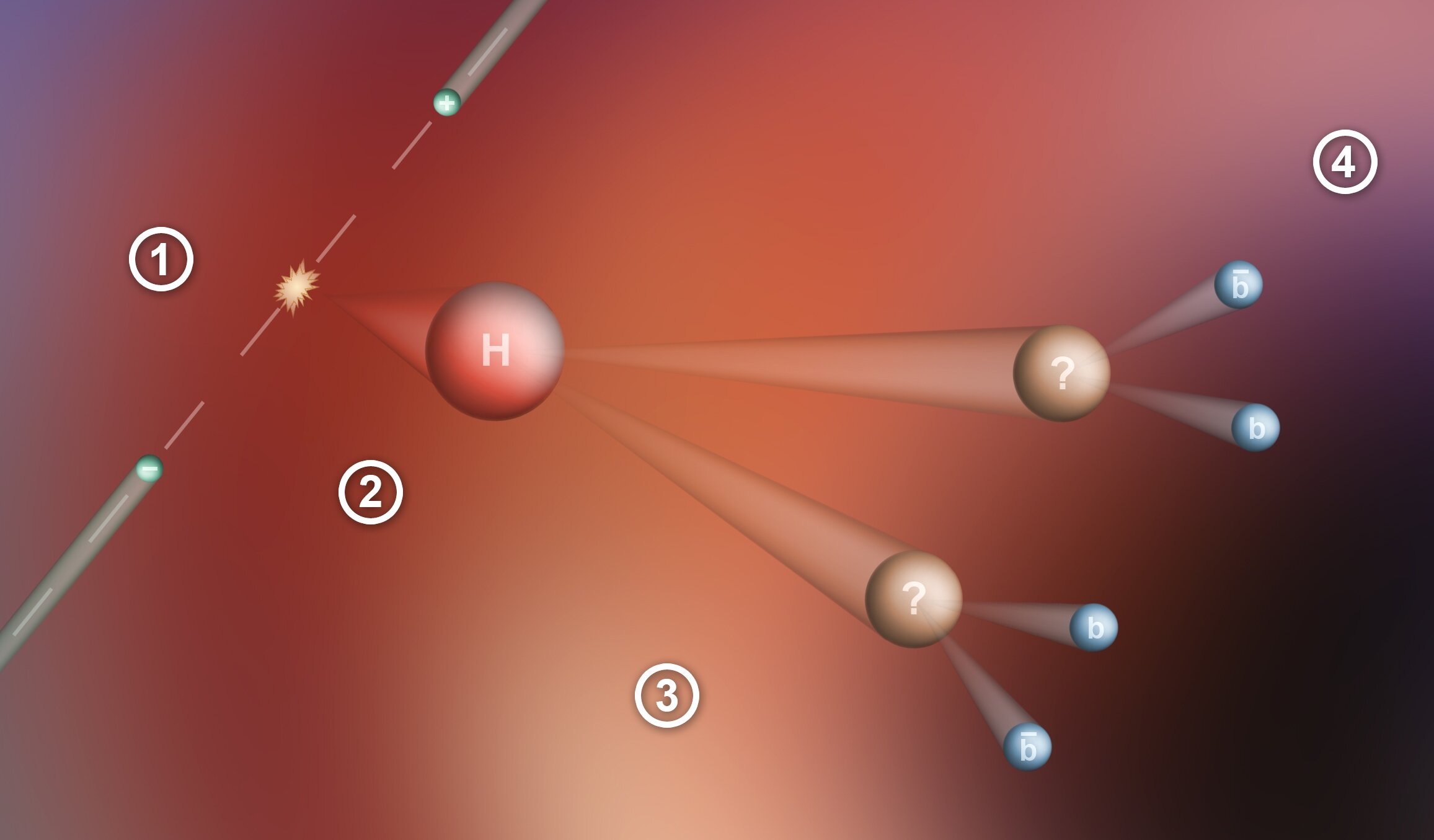The existence of the Higgs boson is responsible for the mass of elementary particles. Researchers at the Institute of Nuclear Physics of the Polish Academy of Sciences in Cracow believe that if the Higgs boson decays into exotic particles, it will be detectable in the successors to the Large Hadron Collider (LHC) currently being designed. Theoretical considerations suggest that the Higgs could decay in an exotic way by acting as a communicator between two groups of particles separated by an energy barrier in Hidden Valley models. The IFJ PAN team has argued that the Higgs boson, one of the most massive particles of the Standard Model, is a perfect candidate for such a communicator.
Detecting Exotic Higgs Boson Decays
The communicators, such as the Higgs boson or hypothetic Z’ boson, would decay into two massive exotic particles that would decay into two particles with smaller masses, which would then be within the Standard Model. The Higgs boson itself would remain unnoticed, but the exotic particles would diverge and eventually decay into quark-antiquark beauty pairs visible in modern detectors as jets of particles shifted from the axis of the lepton beam.
Observations of Higgs boson decays would consist of searching for the jets of particles produced by quark-antiquark pairs. The tracks of these particles would then be retrospectively reconstructed to find the places where exotic particles are likely to have decayed. These places, called decay vertices, should appear in pairs and be characteristically shifted with respect to the axis of the colliding beams in the accelerator. The size of these shifts depends, among other things, on masses and the average lifetime of exotic particles appearing during the Higgs decay.
The collision energy of protons at the LHC is up to several teraelectronvolts, which is theoretically sufficient to produce Higgs capable of crossing the energy barrier that separates our world from the Hidden Valley. However, protons are not elementary particles, so they form a background in which it becomes practically impossible to find the particles from the exotic Higgs boson decays that are being sought.
The detection of possible Higgs decays to these states should be radically improved by accelerators being designed as successors to the LHC: the Compact Linear Collider (CLIC) and the Future Circular Collider (FCC). In both devices, it will be possible to collide electrons with their anti-material partners, the positrons. Electrons and positrons are devoid of internal structure, so the background for exotic Higgs boson decays should be weaker than at the LHC.
In their research, physicists from the IFJ PAN took into account the most important parameters of the CLIC and FCC accelerators and determined the probability of exotic Higgs decays with final states in the form of four beauty quarks and antiquarks. To ensure that the predictions cover a wider group of models, the masses and mean lifetimes of the exotic particles were considered over suitably wide ranges of values.
The researchers have shown that if the Higgs bosons decay into exotic particles, this phenomenon should be perfectly visible in those electron and positron colliders which are planned to be launched in the near future. The existence of particle-communicators is not only possible in Hidden Valley models but also in other extensions of the Standard Model. If the detectors of future accelerators register a signature corresponding to the Higgs decays analyzed by the Cracow researchers, this will be the first step on the road to understanding new physics. The next will be to collect a sufficiently large number of events and determine the main decay parameters that can be compared with the predictions of theoretical models of the new physics.



Leave a Reply